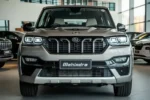This weekend India’s automotive industry was rocked with the announcement that Maruti Suzuki has indeed launched an electric version of its Alto 800, reportedly the long-awaited EV iteration which was truly only for Marutsi fans. First announced on May 15, this affordable electric vehicle reveals a potential paradigm shift in the way the country thinks about sustainable commute with range of an 150-180km which should be enough for people living in urban areas.
India On Wheels: The affordable EV for all of us
The Alto nameplate has been the de facto entry level transport in India for over decades, selling more than 4 million units since its inception. Scaling this recipe into the electric era, Maruti Suzuki plans to take it seriously with Alto 800 Electric.
Maruti was patient, strategic in improving electric mobility instead of running ahead like most premium EV players
The company went all in to solve the basic hurdles that first Indian EVs would face: unaffordable purchase cost, range and top speed and public charging infrastructure.
By approaching it this way Maruti was able to take advantage of tech innovation, lower component prices and develop the know-how needed to make a real game-changing affordable electric vehicle.
As a Maruti Suzuki spokesperson is quoted “Our target was not something aspirational enough, another EV performance car for the early adopters. The our objective was to do what the original Alto did, wher individual Indians must be able to afford electric mobility just like personal transport.
Technical Details and Performance
The Alto 800 Electric uses an electric powertrain developed entirely from scratch, rather than just electrifying the existing drive train of gasoline car. Power is provided by a compact electric motor churning out 35-40 kW (47–54 horsepower) and 100–120 Nm of torque; a marked upgrade from the traditional Alto’s 48 PS (35 kW; 47PS) gasoline engine, mostly in torque delivery.
The motor drives the front wheels through a semi-hydraulic one-speed reduction gearbox instead of a traditional automatic transmission, thus simplifying the machinery with full torque delivery and seamless transitions of power. This configuration makes manufacturing easier and better at the same time.
This active thermal management is part and parcel for the lithium-ion battery pack which has been calibrated to maintain performance even with India’s wide range of climate conditions. The suite achieves full battery life and stable performance in varying environments.
Design and Practicality
While the Alto 800 Electric keeps visual links to its internal combustion uch as they come—yet adds elements that signify its zero-emission power train. Ev specific front fascia, closed grill area that enhances aerodynamic function of the front face and streamlined wheels with discreet blue accents all over exterior demonstrates clean EV identity thus further concisely defines their uniqueness.

From the inside, architecture benefits greatly from the tight packaging that an electric powertrain offers. A flat floor gives you more room in the same external footprint With the dashboard, you have effective controls combined with essential EV specific displays such as battery status, estimated range and energy flow visualization in an easy~first ~EV format even for first-time owners.
Because climate control systems have a large impact on the range of an electric vehicle, there are a lot of things written about this in particular. Instead of resistive heating the Alto 800 Electric uses an effective heat pump system, drastically lowering energy usage in cold weather.
Cabin pre-conditioning: Offering cabin warming or cooling before being unplugged from the grid power, increasing driver range to conserve battery range for actual driving.
Ownership Economics: Making the Case for Electric
As the Alto 800 Electric is priced around 40-50% more than its petrol counterpart (after applicable government incentives), but if we look on basis of Total Cost of Ownership this value proposition is quite strong.
Operating cost per kilometer in an ordinary petrol powered equivalent amounts to a fourth when using electricity where power costs are typically that of typical Indian residential rates,— out-of-the-box savings that stack significantly with ownership periods of 5—7 years. Oil changes are nearly non-existent because there is no oil in the system; fewer ferrule type wear components and regenerative braking leads to longer life of brake components.
The Financing packages designed especially for the Alto 800 Electric take into account both these operating economies and the higher sticker price. Longer loan terms, special financing rates and payment structures to include a pretax estimate of fuel savings will save the front end price premium and balance out month-to-month costs with conventional like options.
Shooting down the Catch 22 of Charging
Realising that charging infrastructure is one of the biggest hurdles, Maruti Suzuki built a USP which goes beyond the four walls of a vehicle and has an ecosystem to support.
Together with a home charging unit for installation, Maruti Suzuki has developed a complete package for the Alto 800 Electric that allows buyers to start overnight charging right after purchase without increasing complexity or fuss.
Maruti, in its quest to keep disposable charger option as affordable (ditto home charging ports), has developed some creative solutions where it becomes costly or challenging for multi-family residences to have dedicated stalls:
- Alliance for Workplace Charging Block programs
- Retail collaborations for opportunistic chargers
- They were recharge hubs (chaingrams) in residential zones
Vehicle-navigations data of charging points, along with near real-time availability feeds reduce range anxiety while on the road as a part of the vehicle’s navigation system. It also has smart routing that can recommend the best charging stops according to battery level, driving conditions and destination status.
The integration also extends to payment systems where it includes RFID enabled charge card and smartphone application that allows the broad spectrum of the charging network without separate accounts / payment method.
Market Challenges and progress
The Alto 800 Electric had a thoughtful Research & Development and strong go-to-market pitch; however, it faces at least several massive barriers in the Indian market.
Battery cell and semiconductor supply chain complexity have resulted in production constraints which act to cap manufacturing volume in this critical launch period. This has meant an operating model of regional scale phasing with major metropolitan areas where the charging infrastructure and most customer awareness has already been developed.
Perhaps one of the biggest of these challenges is consumer education specifically around understanding how to charge, range management and, cost of ownership (total cost of charging). Maruti has trained all the dealers with a detailed program and hired EV Trainers at retail locations to plug those gaps in knowledge.
Social Impact and Future Direction
The Alto 800 Electric in terms of aspiration, carries a depth to it very far beyond the commercial merits. As India’s first truly mass-market electric vehicle, t could be disruptive by spearheading the nation’s move towards a more sustainable transportation future while simultaneously solving urban air quality issues that afflict millions of people?
Electric vehicles such as Alto 800 Electric are an opportunity for energy security in its broadest sense—to reduce our dependence on petroleum imports by harnessing the domestic electricity generation capacity to make India’s road and rail vehicles electric. This is an especially valued transition as India only ramps up its renewable portfolio, enabling a clean transportation boomerang based on ever cleaner electricity.
The Road Ahead : Democratizing Electric Mobility
India has crossed a stark milestone in its automotive march, The Maruti Alto 800 Electric is a defining moment for electric mobility as an aspirational technology converting into innovative commuter solution for masses.
Using the fundamentals of what made Alto so successful in real life, affordability along with contextual and pragmatic solutions; Maruti Suzuki has managed to create a vehicle worthy enough for mainstream EV adoption along various demographics by applying electric vehicle design.
Far removed from the flash and most electric cars brands, Tata Alto 800 elec is not designing to be the fastest or the best looking but hopefully the simplest tool to enable zero-emission vehicles in common Indian families. The most important way in which electric mobility democratization could be made the Alto 800 Electric’s contribution in the indian Auto Centres as we move further into and find our way toward a greener future transport nation.



